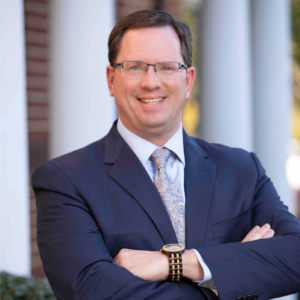How building a unique culture improves profitability
No operator would argue that it only takes a nice building to provide the best for one's residents. It takes a unique culture that is truly lived by the CEO and other top executives, and successfully adopted by all members of the organization. Interestingly, studies have proven that having a company culture that both focuses on resident satisfaction and brings out the best in your staff will positively affect your bottom line. Here are three examples of seniors housing and care companies that have put superior culture into practice.
The Gatesworth at One McKnight Place
Located in St. Louis, The Gatesworth at One McKnight Place is a rental CCRC that overlooks a major interstate freeway just 100 yards from the front door. There's virtually no green space, and there is a big retaining wall on one side. Yet the owners have managed to make this into one of the most profitable projects in the country. How is that possible?
“Our philosophy is revenue-driven and based on the concept of abundance,” says David Smith, a partner in The Gatesworth. Smith was a panelist on a recent NIC Executive Circle conference call on company culture. “Our mind-set is, ‘The answer's yes, what's the question?’ So within our community, we'll walk your dog, shine your shoes, wash your car…whatever the resident wants. When you come in, there's a doorman and four concierges. And we've got three stretch limos and a town car for transportation. Mealtimes and menus are completely open to adjustment, and somebody can come in and have a meal in the dining room any time of the day. To accommodate all this, we have depth of staffing—230 full- and part-time employees for our 260 apartments. We wanted to build a place that we'd like to live in, and the owners continually reinvest in our property, programs, and amenities.”
The Gatesworth also believes in a resident-centered and resident-driven approach. “The residents' needs always come first,” continues Smith. “So, regardless of who we may be with or what our agenda is for a particular day, we will always greet residents. We will always stop a conversation in midstream to address them and their family members. Our managers don't wear name tags, because they know the residents and the residents know them. We're on a first-name basis.”
The community also solicits continuous resident feedback. Not surprisingly, satisfaction levels are high, and the feedback is used to discover additional opportunities to provide service.
Americare
Another excellent example of a company that has built a distinctive culture is Americare, also based in Missouri. The company has 88 communities in four states—Missouri, Kansas, Tennessee, and Mississippi—with 20 skilled nursing facilities, 60 assisted living, 8 Alzheimer's assisted living, and a few independent living products.
“Being in small towns, we have good values and our employees are generally down-home type people,” explains Clay Crosson, Americare president. “But we wanted to reenergize our customer service program with something that was meaningful and relevant to our culture.” To do that, the company took elements from Ritz-Carlton and Cracker Barrel—a regional, folksy-type restaurant.
“We developed a program of hometown hospitality and used a quilt to symbolize how we intertwine our lives with yours,” Crosson says. “From the Ritz-Carlton, we adopted the idea of stand-up meetings and having associates carry a little pocket card to remind them about the things key to their service culture. We came up with our own acronym, FAMILY, where each letter means something. For instance, ‘F' stands for ‘first impressions go a long way’ and ‘A' stands for ‘address people by name.' So, at each of our daily stand-up meetings we take one of these values and just talk about something that we're going to work on that day.”
Crosson admits that this new culture took some time to build buy-in with the staff. So Americare created a CD program that allowed learning at one's own pace. “We call it our Star program and it has four different levels,” Crosson explains. “Once you achieve certain things and demonstrate learning, you earn incentives. It may be onetime cash incentives or actual raises. But it's not easy and can take 18 months to complete. This is what we learned from the Cracker Barrel, this four-level incentive program.”
Importantly, the company has also seen a return on its investment. “I stressed to our staff that we had to have a way to measure the program's success,” continues Crosson. “So we decided to measure two things: occupancy as it relates to customer satisfaction and employee turnover. Before we started the program about 18 months ago, our assisted living occupancy was about 85%. Now it's up to 91%. Although other things were involved, we definitely feel this helped. On the skilled nursing side, it wasn't as big of a change as we only increased 2% total, but our Medicare went up about 17%.”
And did the program improve employee turnover? “Our assisted living turnover went down 5% and skilled nursing went down 10%,” Crosson says. “So it's a modest improvement, but people are still going through the levels. About 83% of our staff have gone through at least level one of the program.”
Benchmark Assisted Living
How does culture affect a larger, regionally based organization such as Benchmark, which has 43 communities in New England, with 4,000 staff members and 4,200 residents? Jill Haselman, chief culture officer, shares some of Benchmark's success stories.
“Our organization is certainly all about the resident and quality care,” she says. “About six years ago, our CEO Tom Grape wanted to differentiate the company by creating a culture based on the values he and his organization live by. He felt that if our associates were very clear about their expectations and how to live our values, they'd be more satisfied and the result would be resident satisfaction, word-of-mouth marketing, and so on.
“To do that, we spent the last five years investing in and creating a culture based on authentic core values,” continues Haselman. “Similar to Americare, we use an acronym—ours is PERSONAL—where each letter represents a core value. They are integrated throughout our entire cultural system, in every performance review and behavior-based interview process, and are an overriding component of promotions and terminations.
“We also looked at the correlation between turnover and retention, which led to a performance-based system from senior leadership down to every hiring supervisor. The way we define and reward loyalty is a two-way street. We expect our top and most loyal performers to share in the risk of their career development, for example, by trying new things. We don't ever care to be the largest company. We just want to be world-class and the best we can be.”
But have these efforts affected profitability? “In the last five years, Benchmark's turnover has gone from mid-70% to 42%,” Haselman says. “We're proud of that. It's lowered our expenses on the hiring end, which we use to improve benefits for our frontline associates. Additionally, we have a 48% retention rate of associates who have been with Benchmark for two years or more. This is our loyalty baseline, and we have created a ‘Loyalty Club’ around it that offers additional benefits to members.
“Also, every year since 2002, we've tracked loyalty, respect, supervisory effectiveness, and teamwork through our associate satisfaction survey. Year over year, our scores have trended positively, providing validation that our investments of time and money in culture are paying off. To further validate the ROI [return on investment] of our strategy, we have correlated associate satisfaction and loyalty to resident satisfaction and unbudgeted NOI [net operating income].”
And the results? “There is a direct financial correlation, both positive and negative, among satisfaction with associates, residents, and NOI,” Haselman concludes. “The difference between the top and bottom 20% of communities within the correlation framework exceeds a swing of $1 million. We know with absolute validity that happy employees equal happy customers, which equals profit.”
For more information, phone (410) 267-0504 or visit https://www.NIC.org. To send your comments to the author and editors, e-mail mullen0507@nursinghomesmagazine.com.
Related Articles
Topics: Articles











